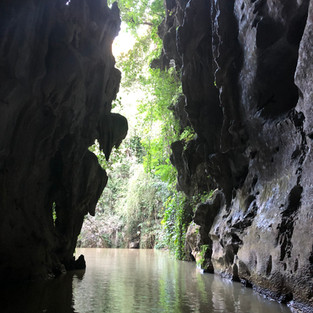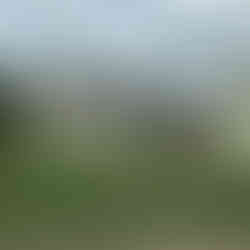Cuba - Day 2 - Valle De Vinales National Park, buggies and cigars!
My sister and I were on a 3-night tour of Cuba, and on the second full day, we had an awesome day outside of the city. Our guide had hired a driver and a large van for the 10 of us, and we traveled out of Havana, south and west into the interior of the island.
We had a few stops on the tour that day, and I will talk about them, but the biggest take away I had from the day was the way the people lived and worked in this area. I felt that I was travelling back in time, while having all the infrastructure around me from today – it was strange!
As we traveled out of the city, the four-lane highway remained intact and in great driving condition. I am a civil engineer, and have spent my career working on infrastructure projects, so I notice these types of things. The traffic was extremely light! There were about 5% of the cars on the roadway that you would see on a similar roadway in the US.
A little outside of Havana, I started noticing the pedestrians. At most of the overpasses, which were few because we were in a rural area, there were usually a few people gathered under the bridge, along with one or two guys with bikes that could carry a passenger. I finally realized that there was a bus route on the roadway, and these people were waiting for the bus. The guys with the passenger bikes were ferrying people to the bus stop from a village or home that was near the highway, but we could not see. The bus simply pulls onto the shoulder, and people get on. The people in the area can not afford cars, so this is an essential means of transportation.
The further we went away from Havana, the less cars were seen, and the more horse and buggies seemed to be the main transportation. The people with horse and buggies would use the right lane and the shoulder, while the cars were in the left.
Our first stop, after getting off the highway and traveling a VERY winding road, was a lookout point in the Valle De Vinales National Park. It was beautiful, with lush foliage everywhere. There was a small visitor center, with informational signs up on the walls talking about the different plants, birds and other animals in the area, as well as a bit of history of the location. We did not hike here, just looked at the beautiful scenery and went on our way.
Our next stop, where we stayed for several hours, was a tobacco farm. First, we all hopped on horses, and took a nice ride through the land. I was struck at how beautiful it was, and how many of the buildings we passed had thatched roofs. Eventually, we got off the horses and got a tour of the cigar making end of the business on the farm.
One of the farmers took us into the tobacco drying barn and told us about how the cigar making process works in Cuba. The government supplies the tobacco seeds, and it seemed like it is a very tightly held number of seeds that each farmer gets. Then, the farm does the work planting, raising, picking, drying, and making the cigars. Once the plants are harvested, the farm gives something like 90% of the harvest to the government and is allowed to keep the other 10%. I did not see any mechanical farm equipment - I did see oxen, and other hand tools that would be used for farming.
On this farm, where I saw about 10 workers, the farmer said that they can make about 5000 cigars with the plants they keep. They sell these cigars for $5-$10 each, resulting in about an annual income for the entire farm of about $70,000. I’m not sure how they split that between the workers, but any way its split, each person doesn’t make much. Definitely not enough to purchase a car or get a new roof on a home. All of the workers seemed to be happy, and content with a simpler way of life.
Our next stop was a cave within the National Park. The cave was huge, and inside it was an underground river. None of us in the tour really knew what to expect, because the translation on our brochure said we were going to kayak, and this was not the case. We got on a boat inside the cave and were taken on a tour inside. It was neat! At the end of the tour we were let off in a small park area, where a few local artisans were selling hand made items made from grass. I felt that this was their family income, so I bought several baskets.
We made our way back to Havana, and it was getting dark. The beginning of the return trip was back through the winding roads, and we got more glimpses of what typical Cuban rural life is like. Once we made it to the main highway, it was getting dark, and the ride became kind of scary! There were so many horse and buggies on the road, with no lights, and traveling next to each other, that I was sure we were going to hit one! One guy, riding in the back of a buggy took a bottle and held it up so that our headlights would catch it – kind of like a reflector, but much less effective!
On our way back, our group had a few questions for our guide. The way of life in Cuba was the big topic. Earlier in the trip, our guide told us that she could get the show “Friends” on her computer. Someone asked if she was jealous of the way the people on “Friends” lived, and the things they had that were not available in Cuba. Our guide’s response, which I am sure was guarded, struck me. In summary, she thought that although there wasn’t access to things in Cuba that Americans think are standard, the Cubans have much more of a connection with the community – because they need to rely on the rest of the community just to get by. She said that yes, she would like a new air conditioner, or microwave, but she felt that Americans relied on “things” too much. She probably had a point. She said there are good and bad things on both sides.










































Comments